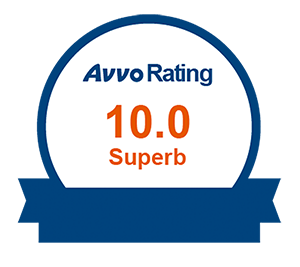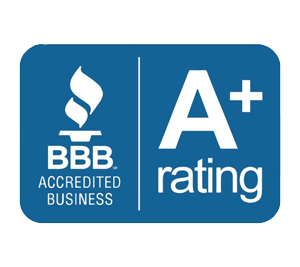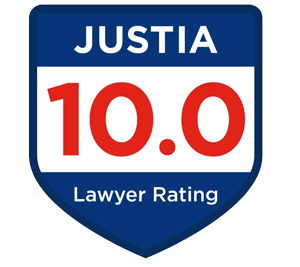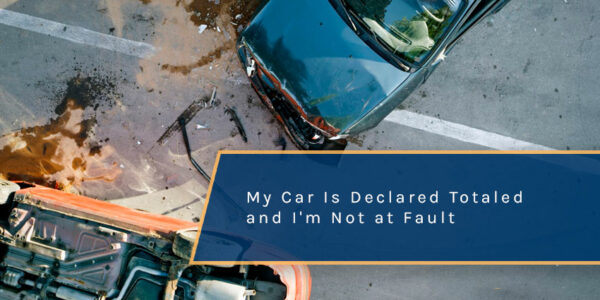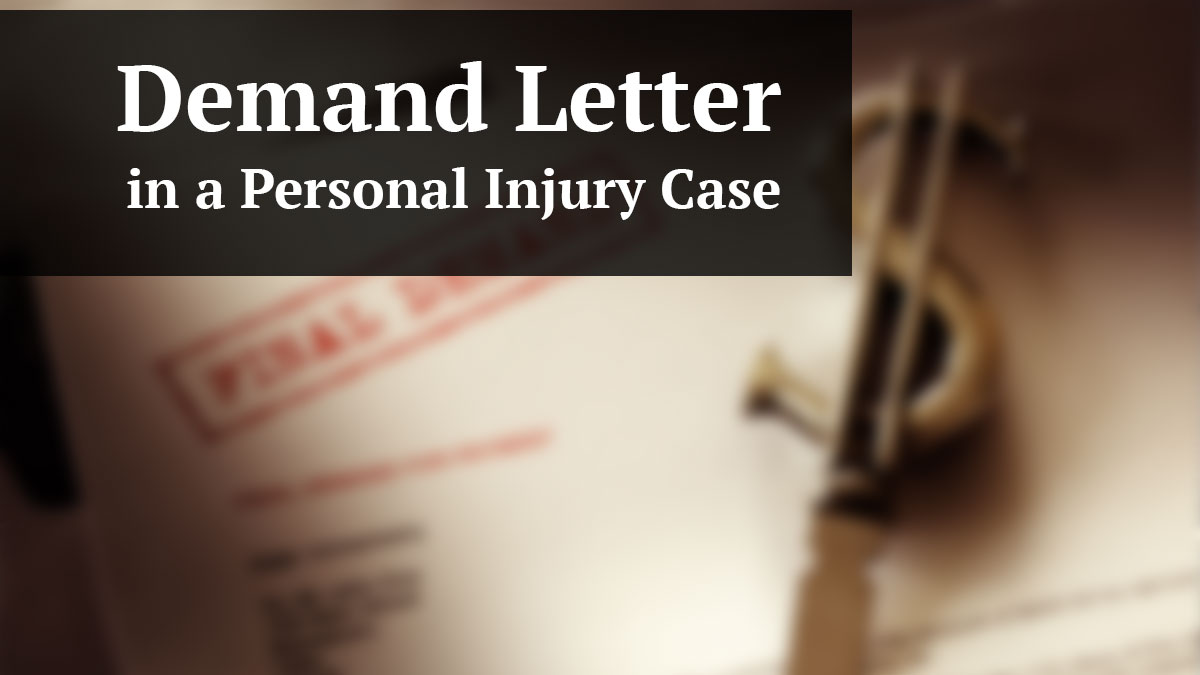
A demand is a required step in every personal injury case. To the layperson, a demand is simply a way to present your damages to the insurance company. While a demand is not a technique that is exclusive to personal injury cases, it is something that is utilized more in this area of law than any other.
You may have heard your lawyer or paralegal mention a demand throughout your treatment. A demand technically can be sent at any time, but the timing of when it is sent is often strategic. For example, in a car accident case, if the other driver only has $10,000 of insurance, you might want to send a demand as soon as you have had your MRI and found positive findings (meaning herniated or bulging discs). But, if the at-fault driver has a larger insurance policy, you likely will not want to rush out a demand until you are finished with your medical treatment. So, there are many strategic decisions that can be made surrounding the demand, including what goes in it.
At St. Petersburg Personal Injury Attorneys McQuaid & Douglas, we normally have a team pulling together documents, writing demands, lawyers editing them, and then negotiating the offers. It is a time consuming process that clients do not normally understand. A client’s priority is settling the claim. Our priority is moving the case quickly and not leaving money on the table simply for the sake of speed. The purpose of this article is to explain the demand process for a personal injury client so that they can understand what all goes into the demand process.
Step 1 of the Personal Injury Demand- Compile All Documents
Compiling all of the records from the claim is by far the most time consuming step of the process. You can imagine how difficult it can be to contact every medical provider and get updated records and bills. Hospital records are by far the worst to get in a timely manner. Getting lien information can also be frustrating. While motor vehicle and health insurance companies are usually pretty good about sending med pay lien information, liens from Medicare, the VA or any other government agency can take months. You can imagine how frustrating it can be when everything is ready to go and we have to wait on liens to finalize our demand. But, getting all of the medical records, bills and liens is an important step toward maximizing the value of your claim. If the insurance adjuster doesn’t have the document, you won’t get compensated for it.
Step 2- Drafting the Demand
A demand can vary in size. We use short form and long form demands depending on the circumstances.
The Short Form Demand
When we know that our claim far exceeds the amount of insurance available, we will simply write a short description of the claim, attach the records and send it. As mentioned in the above, short form demands are common when the amount of insurance is only $10,000.00.
The Long Form Demand
This is the standard demand that you would expect to see in a personal injury claim. Our long form demands are usually several pages long. They begin with a lengthy discussion about liability. We describe the accident in detail, whether there were any witnesses, if a traffic ticket was issued, and describe why the other party was at fault.
The next section of the long demand addresses the injuries and the treatment history. This is the longest section of the demand because we have to describe all of the injuries in detail, where our client was treated, and when. We conclude this section with a summary of all of the medical bills, liens, etc.
The next section of the demand addresses any lost wages or out of pocket expenses. We prove lost wages through pay stubs or any other documentation showing loss of business. Out of pocket expenses are typically insurance co-pays or for medication.
The next section of the demand is our discussion about how the personal injury accident has affected your life. We will typically talk about our client’s background and what he or she can no longer do, or has troubling doing. This is our opportunity to explain the personal side of the case and make our client appear sympathetic, rather than a statistic.
Our final section demands a certain amount of compensation by a set time frame.
Step 3- Supplementing the Demand
After receiving the demand, yet prior to making an offer, an insurance company may have follow-up questions. In a high dollar case, they almost always ask for several years of past medical records. But, if we feel that the request is legitimate and will help us get the claim resolved, we will usually comply with the request.
How Long Do You Give the Insurance Company to Respond to the Demand?
Most of our demands have a thirty day time limit. There are a lot of records that are attached to a demand and it takes a significant amount of time for the insurance company to process and evaluate it. In situations that are not complex or do not involve a lot of paper, we give a twenty day limit. And, when we provide a supplement, we will usually give ten to fourteen days for a response.
Step 4- Settling the Claim
The settlement process is my favorite part of the claim for obvious reasons. Usually the insurance company will start out with a low number and then it is our job to get them up to their maximum authority level. This figure is pre-determined by the adjuster and her supervisor before the negotiation process begins. That is why it is so important that the demand includes everything that we want to be compensated for. We will normally go back and forth several times with the adjuster in order to close in on what we believe their maximum number is. In certain situations, if we are close to a settlement and the adjuster has reached his or her maximum authority, it is possible for them to get some more money in order to get the case settled. We do our best to arrive at a settlement without the necessity of a lawsuit. If the case cannot be settled, then the next step is to file a lawsuit and continue on with the case.
Contact a Local Personal Injury Attorney
As you have likely learned from the above, preparing a personal injury demand is a complex task. Laypeople who try to negotiate their claims directly with the insurance company always leave money on the table. I guarantee that is the case. That is why in every personal injury claim you should hire an experienced lawyer who specializes in your type of claim. Many lawyers in St. Petersburg or in Pinellas County will take your case, but only a few have the experience and resources to handle it properly. While we hope that you are not injured in a personal injury accident, if you are looking for advice or would like a consultation, please contact us.



